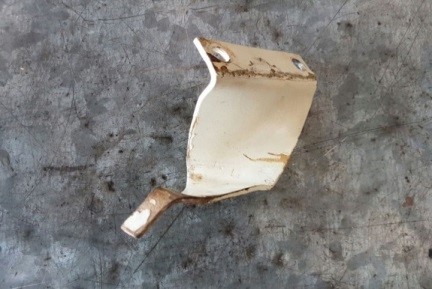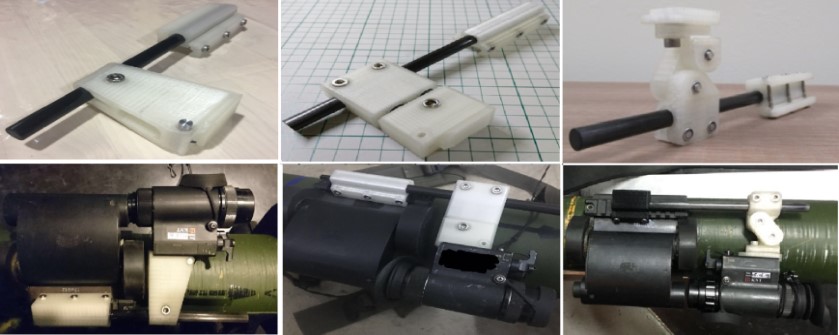 Web Content Viewer
Web Content Viewer
Background
Additive Manufacturing (AM), commonly known as 3D Printing, is an evolving disruptive technology which can transform Ministry of Defence (MINDEF)'s and the Singapore Armed Forces (SAF)'s Capability Development and Logistics processes. The Maintenance and Engineering Support (MES) Formation has been tasked to lead the development of the AM Capability for MINDEF/SAF.
In November 2017, MINDEF/SAF, through the MES Formation, signed a Memorandum of Understanding (MoU) with the National Additive Manufacturing Innovation Cluster. The MoU allows MES to accelerate the development of MINDEF/SAF's AM capabilities and tap on the shared resources and knowledge.
Benefits of Additive Manufacturing
With the introduction of AM, MINDEF/SAF can potentially reduce reliance on commercial suppliers for customised equipment parts, and shorten the waiting time for these parts. This will not only reduce the turnaround time for maintenance but also achieve the following benefits:
a) Flexible Spares Support. The ability to print-on-demand allows the SAF to implement a hybrid spares support model of stockpiling and production, reducing the amount of time required to acquire spares as well as storage costs.
b) Overcome Spares Obsolescence. With the availability of technical data, AM can potentially manufacture obsolete parts to prolong the operational lifespan of selected platforms and lessens the need to acquire new platforms due to obsolescence. Examples include the Land Rover Switch Knob (See Figure 1) and the submarine decompression valve and impeller pump used by Republic of Singapore Navy.

Figure 1: Original (Left) & 3D Printed (Right) Switch Knob
c) Support Innovation Efforts through Rapid Prototyping. MINDEF/SAF is also exploring the use of AM to provide support for ground-up innovation efforts, by allowing soldiers to rapidly create and improve on prototypes for projects without going through tedious procurement processes.
Innovation Projects enabled by Additive Manufacturing
Some examples of innovation projects enabled by AM are illustrated below:
a) L2-SG Turret Position Indicator. Due to the limited space in our L2-SG Main Battle Tanks (MBTs), the turret position indicator would occasionally be damaged by loose equipment in the turret compartment. Traversing with a damaged indicator can potentially damage the cables (See Figure 2) within the compartment, resulting in a critical failure of the L2-SG turret.

Figure 2: Damaged L2-SG Turret Position Indicator & Cable
With AM, MES was able to improve the existing indicator design and increase operational readiness. Using AM, the indicator underwent multiple iterations (See Figure 3) before finalising the design in three weeks. With a change in material and design, the new indicator eliminates the need for End User Certificate, reduces lead time, improves system availability and can be manufactured on demand. The indicators were trialled and approved by the System Manager with plans for fleet wide implementation.

Figure 3: Different Iterations & Finalised Design of L2-SG Turret Position Indicator
b) Night Vision Goggles Mount for MATADOR. With the increasing complexity of the modern battlefield, the lack of night sight capabilities on the MATADOR's optical sight can affect servicemen's hit rate if they were to engage targets in no or low light conditions. To overcome this, ground units improvised a mount to secure their Night Vision Goggles (NVG) onto the MATADOR to illuminate the target through the optical sight for firing. To solve the operational gap, MES was engaged to help design a mount to secure the NVG onto the MATADOR. Through rapid prototyping, different design iterations (See Figure 4) were fabricated and tested over a span of four months. The mounts were tested in the Infantry Gunnery Training Simulator to assess their effectiveness prior to live-firing trials and full-scale implementation.

Figure 4: Design Iterations using AM
c) Do-It-Yourself Drones. Commercial drones are mostly developed for specific purposes such as aerial photography. In order to allow full flexibility of the drones to meet the Singapore Army's specific requirements in terms of flight performance, capability and customisation, MES designed and developed drones in-house using AM (See Figure 5). By leveraging on AM and Commercial-Off-The-Shelf (COTS) components, Do-It-Yourself drones not only offer lower repair costs, faster turnaround time and customisable payloads, they also allow the Army Engineers to deepen engineering expertise to serve the Army better.

Figure 5: DIY Drone
